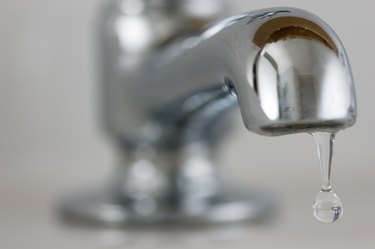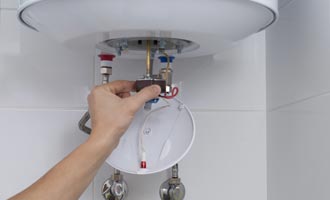Efficient Solutions for Dealing with Low Water Pressure in Your Home
Efficient Solutions for Dealing with Low Water Pressure in Your Home
Blog Article
Any individual maintains their own perception on the subject of Dealing with Low Water Pressure in Your Home.

Low tide pressure in your house can be a discouraging trouble, impacting whatever from showering to cleaning meals. If you're experiencing weak water flow, there are numerous possible causes and remedies to check out. In this guide, we'll talk about typical reasons for low tide stress and functional steps to attend to the issue effectively.
Introduction to Low Tide Stress
Low water pressure happens when the flow of water from your taps, showers, and various other fixtures is weak than common. This can make daily tasks extra tough and much less effective. Recognizing the causes of low tide pressure is important to finding the right remedy.
Typical Sources Of Low Water Pressure
Pipeline Obstructions
With time, pipes can become clogged with mineral deposits, debris, or debris, limiting the flow of water. This is a typical issue in older homes with galvanized steel pipelines.
Rust
Corrosion within pipes can lead to leakages and minimized water stress. Rust build-up can tighten water circulation, specifically in maturing plumbing systems.
Faulty Stress Regulators
Stress regulatory authorities are responsible for preserving consistent water pressure in your house. If they malfunction, it can result in low water stress or irregular circulation throughout your house.
Municipal Supply Of Water Issues
Sometimes, the issue lies outside your home. Municipal supply of water concerns, such as main line leakages or maintenance job, can momentarily lower water stress in your location.
Just How to Diagnose Low Water Stress
Inspecting Taps and Components
Begin by testing the water pressure at different faucets and fixtures throughout your home. If the problem is separated to details locations, it may show localized problems.
Examining Pipelines
Examine noticeable pipelines for signs of leaks, rust, or obstructions. Take note of any uncommon sounds, such as knocking or rattling pipes, which can suggest issues within the plumbing system.
Consulting with a Plumber
If you're incapable to pinpoint the root cause of low tide stress, consider hiring an expert plumber to carry out a comprehensive evaluation. They can recognize underlying concerns and recommend suitable options.
Do It Yourself Solutions to Deal With Low Tide Stress
Cleaning Up Aerators and Showerheads
Natural resources can gather in aerators and showerheads, lowering water circulation. Get rid of and clean up these parts routinely to boost water pressure.
Flushing Hot Water Heater
Sediment buildup in the water heater can limit circulation and reduce efficiency. Purging the storage tank periodically helps eliminate sediment and keep ideal performance.
Inspecting Pressure Regulatory Authority
Ensure that the pressure regulator is functioning properly. Readjusting or changing the regulatory authority can help restore appropriate water pressure throughout your home.
Clearing Clogs in Pipes
For minor clogs, attempt making use of a plumbing snake or chemical drain cleaner to clear blockages in pipes. Be cautious when making use of chemicals and adhere to safety guidelines.
When to Call a Specialist Plumber
If DIY efforts fail to resolve the problem or if you presume substantial plumbing issues, it's ideal to look for support from a qualified plumber. They have the proficiency and devices to deal with complicated concerns securely and efficiently.
Preventive Measures to Maintain Water Stress
Routine Maintenance
Schedule regular upkeep for your plumbing system to avoid problems such as rust, leakages, and obstructions. Addressing minor troubles early can help stay clear of even more significant fixings later.
Mounting a Stress Booster
Take into consideration setting up a pressure booster pump to enhance water stress in areas with continually low flow. This can be particularly helpful for multi-story homes or buildings with high-demand components.
Surveillance Water Use
Be mindful of water use behaviors and avoid ill-using the plumbing system. Straightforward modifications, such as astonishing showers and washing loads, can aid preserve ample water stress.
Verdict
Handling low water pressure can be discouraging, however recognizing the underlying causes and implementing suitable solutions can recover optimal flow throughout your home. Whether it's cleansing aerators, checking pipelines, or seeking advice from a plumber, taking positive steps can make certain a consistent supply of water for your everyday demands.
HOW TO FIX LOW WATER PRESSURE IN YOUR HOUSE (EXPERT GUIDE)
The morning shower lacking any real pressure? Bathtub taking hours to fill? Or maybe you’re dissatisfied with the inadequate performance from your combi boiler?
Then you, like millions of others across the UK, might be experiencing low water pressure.
Fortunately, the good news is that you don’t have to continue living this way. The cause of low water pressure in the home is often quite simple, and you may not even require a plumber to fix the problem.
What causes low water pressure in the house?
If you are experiencing issues with water pressure throughout your home, then you may have one of the problems outlined below.
Most of these problems can be fixed quite easily, but for others, you may need to contact a plumber.
Obstructed Shutoff Valve
If you’ve just bought a new home or recently had building work conducted on your property, there is a chance that your water valves were not fully opened.
If the water valve is partially closed, then you may be restricting the amount of water entering your home. To fix this, simply ensure the valve is fully open.
If the valve appears fully open but you are still encountering reduced water pressure, then the valve may be broken. If this is the case, do not under any circumstances try to fix it without proper training.
Often found under your kitchen sink, a water valve will usually look like a bright yellow handle.
Again, if you believe the water valve is broken, contact a plumber immediately.
Leaks in Your Water Pipes
Leaks are the worst-case scenario when it comes to low water pressure.
If the water pipes are damaged, then this will cause low water pressure, as not all the water will make it to your taps.
After you’ve checked to see if the valve is fully open, you can conduct a leak check of your home. Now, this may seem scary, but it is actually quite simple.
Clogged Water Pipes
Clogged water pipes are one of the most common causes of low water pressure.
These clogs usually build-up when your home is supplied water via iron pipes. Iron is particularly vulnerable to rusting which can then break off and cause an obstruction within your system. You also face the problem of things like dirt, gravel or sand entering creating mineral deposits which further block water flowing from the mains water supply.
Unfortunately, if you suspect that clogged pipes may be restricting your water supply, then you will need to contact a plumber.
In this situation, you will either need to have your pipes removed and cleaned or in more severe cases, you could require a new set of water pipes.
Designer Taps
Designer taps look fantastic, but are they built to be efficient in your plumbing system? Modern taps are built for modern homes and they often have lower flow rates that are specifically designed for use within high-pressure systems.
Install a Water Pressure Booster Pump
If the issue is simply that the mains water pressure supply is too low, the simplest fix is to invest in a booster pump. Found in homes of all shapes and sizes, booster pumps are a relatively cheap option to add extra pressure to your home.
Designed to increase water pressure by passing water into the pump from your mains supply and then ejecting it into your home water system at a higher pressure, a booster pump is a truly simple and effective solution to increasing water pressure.
https://www.anchorpumps.com/blog/the-plumbers-guide-to-fixing-low-water-pressure/

HOW TO FIX LOW WATER PRESSURE IN YOUR HOUSE (EXPERT GUIDE)
The morning shower lacking any real pressure? Bathtub taking hours to fill? Or maybe you’re dissatisfied with the inadequate performance from your combi boiler?
Then you, like millions of others across the UK, might be experiencing low water pressure.
Fortunately, the good news is that you don’t have to continue living this way. The cause of low water pressure in the home is often quite simple, and you may not even require a plumber to fix the problem.
What causes low water pressure in the house?
If you are experiencing issues with water pressure throughout your home, then you may have one of the problems outlined below.
Most of these problems can be fixed quite easily, but for others, you may need to contact a plumber.
Obstructed Shutoff Valve
If you’ve just bought a new home or recently had building work conducted on your property, there is a chance that your water valves were not fully opened.
If the water valve is partially closed, then you may be restricting the amount of water entering your home. To fix this, simply ensure the valve is fully open.
If the valve appears fully open but you are still encountering reduced water pressure, then the valve may be broken. If this is the case, do not under any circumstances try to fix it without proper training.
Often found under your kitchen sink, a water valve will usually look like a bright yellow handle.
Again, if you believe the water valve is broken, contact a plumber immediately.
Leaks in Your Water Pipes
Leaks are the worst-case scenario when it comes to low water pressure.
If the water pipes are damaged, then this will cause low water pressure, as not all the water will make it to your taps.
After you’ve checked to see if the valve is fully open, you can conduct a leak check of your home. Now, this may seem scary, but it is actually quite simple.
Clogged Water Pipes
Clogged water pipes are one of the most common causes of low water pressure.
These clogs usually build-up when your home is supplied water via iron pipes. Iron is particularly vulnerable to rusting which can then break off and cause an obstruction within your system. You also face the problem of things like dirt, gravel or sand entering creating mineral deposits which further block water flowing from the mains water supply.
Unfortunately, if you suspect that clogged pipes may be restricting your water supply, then you will need to contact a plumber.
In this situation, you will either need to have your pipes removed and cleaned or in more severe cases, you could require a new set of water pipes.
Designer Taps
Designer taps look fantastic, but are they built to be efficient in your plumbing system? Modern taps are built for modern homes and they often have lower flow rates that are specifically designed for use within high-pressure systems.
Install a Water Pressure Booster Pump
If the issue is simply that the mains water pressure supply is too low, the simplest fix is to invest in a booster pump. Found in homes of all shapes and sizes, booster pumps are a relatively cheap option to add extra pressure to your home.
Designed to increase water pressure by passing water into the pump from your mains supply and then ejecting it into your home water system at a higher pressure, a booster pump is a truly simple and effective solution to increasing water pressure.
https://www.anchorpumps.com/blog/the-plumbers-guide-to-fixing-low-water-pressure/
I'm very serious about and I'm hoping you enjoyed reading the blog post. For those who enjoyed reading our post if you please be sure to share it. Many thanks for going through it.
Appointment Report this page